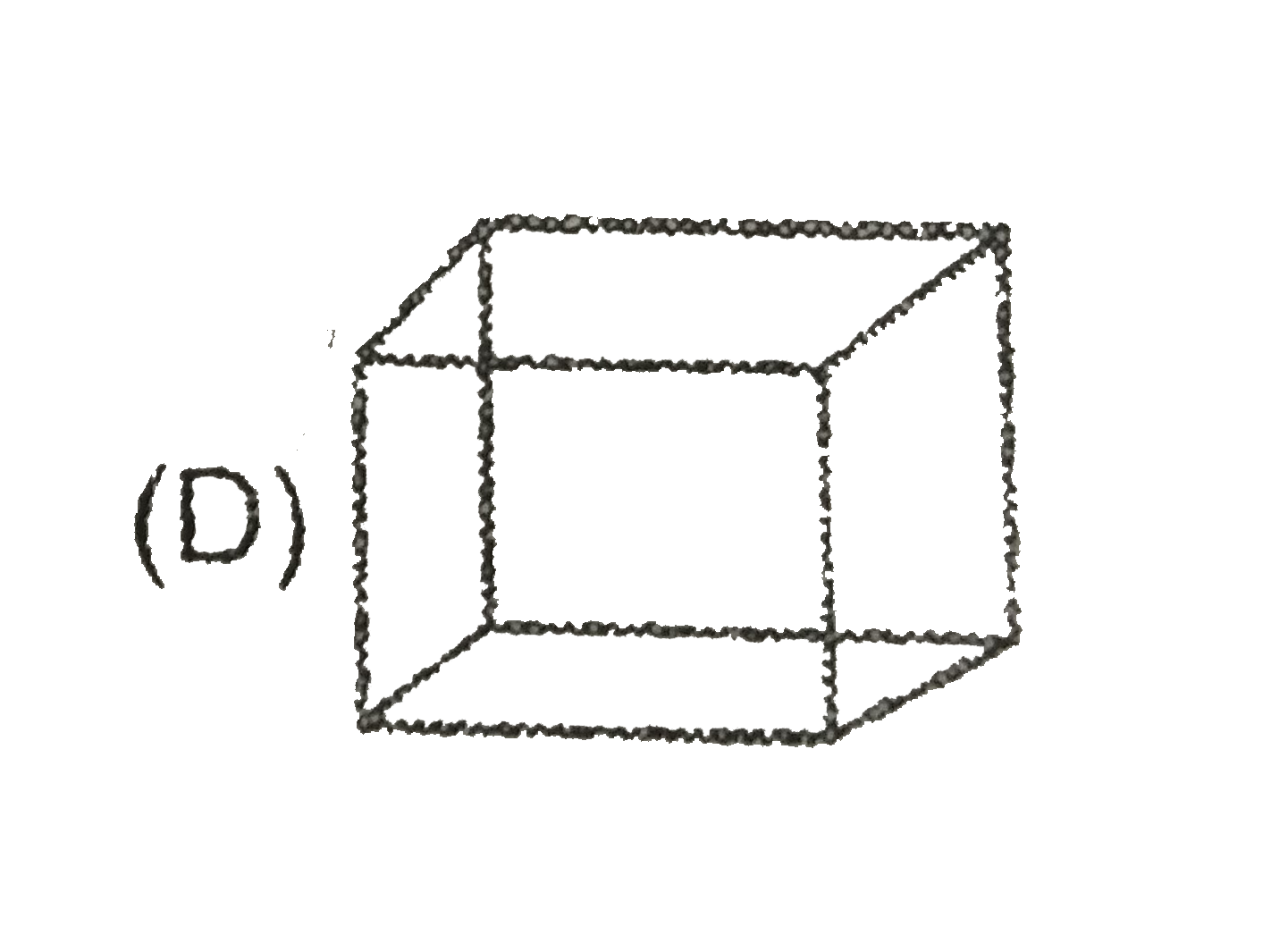Calculate the DU of following compounds :
(i) C6H6ClBrO , (ii) C5H9N
The correct Answer is:(i) 3 , (ii) 2
To calculate the Degree of Unsaturation (DU) for the given compounds, we will use the formula:
DU=C−H+X+N2+1
Where:
- C = number of carbon atoms
- H = number of hydrogen atoms
- X = number of halogens (F, Cl, Br, I)
- N = number of nitrogen atoms
1. Identify the number of atoms:
- Carbon (C) = 6
- Hydrogen (H) = 6
- Halogens (Cl + Br) = 2 (1 Cl and 1 Br)
- Nitrogen (N) = 0 (there are no nitrogen atoms)
2. Plug the values into the formula:
DU=6−6+2+02+1
3. Calculate:
DU=6−6+2+02+1=22+1=1+1=2
4. Final result for the first compound:
- Degree of Unsaturation (DU) = 2
(ii) For the compound C5H9N:
1. Identify the number of atoms:
- Carbon (C) = 5
- Hydrogen (H) = 9
- Halogens = 0
- Nitrogen (N) = 1
2. Plug the values into the formula:
DU=5−9+0+12+1
3. Calculate:
DU=5−9+0+12+1=−32+1=−1.5+1=−0.5
Since the degree of unsaturation cannot be negative, we need to check our calculations. The correct calculation should be:
DU=5−9+0+12+1=−3+22=−12+1=0.5
This indicates that the compound is saturated or has a very low degree of unsaturation.
4. Final result for the second compound:
- Degree of Unsaturation (DU) = 0.5 (but practically it indicates saturation)
Summary of Results:
- For C6H6ClBrO, DU = 2
- For C5H9N, DU = 0.5
- C = number of carbon atoms
- H = number of hydrogen atoms
- X = number of halogens (F, Cl, Br, I)
- N = number of nitrogen atoms
- Carbon (C) = 6
- Hydrogen (H) = 6
- Halogens (Cl + Br) = 2 (1 Cl and 1 Br)
- Nitrogen (N) = 0 (there are no nitrogen atoms)
DU=6−6+2+02+1
DU=6−6+2+02+1=22+1=1+1=2
- Degree of Unsaturation (DU) = 2
- Carbon (C) = 5
- Hydrogen (H) = 9
- Halogens = 0
- Nitrogen (N) = 1
DU=5−9+0+12+1
DU=5−9+0+12+1=−32+1=−1.5+1=−0.5
DU=5−9+0+12+1=−3+22=−12+1=0.5
This indicates that the compound is saturated or has a very low degree of unsaturation.
- Degree of Unsaturation (DU) = 0.5 (but practically it indicates saturation)
- For C6H6ClBrO, DU = 2
- For C5H9N, DU = 0.5
Topper's Solved these Questions
- BOOK - RESONANCE ENGLISHCHAPTER - STRUCTURAL IDENTIFICATIONEXERCISE - Exercise-1 (Part-II)37videos
STRUCTURAL IDENTIFICATION
- BOOK - RESONANCE ENGLISHCHAPTER - STRUCTURAL IDENTIFICATIONEXERCISE - Exercise - 2 (Part-I)10videos
STRUCTURAL IDENTIFICATION
- BOOK - RESONANCE ENGLISHCHAPTER - STRUCTURAL IDENTIFICATIONEXERCISE - Advanced level Problems (Part-III)12videos
STRUCTURAL IDENTIFICATION
- BOOK - RESONANCE ENGLISHCHAPTER - STEREOISOMERISMEXERCISE - EXERCISE (PART III : PRACTICE TEST-2 (IIT-JEE (ADVANCED PATTERN))23videos
STEREOISOMERISM
- BOOK - RESONANCE ENGLISHCHAPTER - SURFACE CHEMISTRYEXERCISE - Section - 51videos
SURFACE CHEMISTRY
Similar Questions
Calculate the O.N. of all atoms in following compounds : -
C2H5OHView SolutionFind DU of following compound:-
(a) C6H6O , (b)C6H5I , ( c)C6H6ClBrO , (d)C5H9NView SolutionFind DU of following compound:-
(A)C8H12 , (B)C5H10 , ( C)C7H8 , (D) View Solution
View SolutionComplete the following reaction equations :
(i) C6H5N2Cl+CH3COCl→
(ii) C2H5NH2+C6SO2Cl→
(iii) C2H5NH2+HNO2→View SolutionComplete the following reaction equations :
(i) C6H5N2Cl+H3PO2+H2O→
(ii)C6H5NH2+Br2(aq.)→View SolutionHow can we distinguish chemically the following pairs of compounds?
(i) CH3CHO and CH3COCH3
(ii) CH3CHO and C6H5CHO
(iii) C6H5COCH3 and C6CH5COC6H5
(iv) CH3CHO and CH3CH2CHOView SolutionConvert C6H6 to C6H5D
View Solution(a) Write the structures of main products when benzene diazonium chloride reacts with the following reagents :
(i) H3PO2+H2O
(ii) CuCN/KCN
(iii) H2O
(b) Arrange the following in the increasing order of their basic character in an aqueous solution :
C2H5NH2,(C2H5)2NH,(C2H5)3N
(c) Give a simple chemical test to distinguish between the following pair of compounds :
C6H5−NH2andC6H5−NH−CH3View SolutionComplete the following reaction :
C6H5Ona+C2H5CI→View SolutionComplete the following chemical equations
(i)C6H5N2Cl+C6H5NH2→
(ii)C6H5N2Cl+CH3CH2OH→
(iii) RNH2+CHCl3+KOH→View Solution

